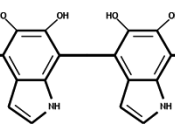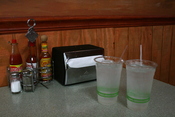a) Describe the process by which the biopolymer is produced naming any biological and chemical agents used to produce it.
Biopolymers are naturally occurring polymers. One example is poly-hydroxybutanoate (PHB). PHB can be produced in a lab by feeding bacteria a diet rich in nutrients until large colonies form and then withdrawing glucose. The bacteria immediately start secreting PHB, which provides them with an energy store. In the 1980, the three genes in Alcaligenes eutrophus needed for the production of PHB were successfully cloned and transferred into a common bacteria, E.coli because it reproduced quickly and has an easily manipulated physiology. The PHB gene is transported into corn and maize plants, which allowed crops of PHB-producing plants to be grown and harvested. The amount of PHB that the organism can produce is from 30%-80% of its own dry weight.
b) Identify and describe some of the main uses of the biopolymer and relate these uses to the properties of the biopolymer.
The flexibility of PHB allows for its use in plastic applications such as plastic bags and wrapping film while its durability is useful in bottles and disposable nappies. Being easily biodegradable and renewable, it can also be used in storing medicinal products so that is it decomposed within the patient's body. Its main benefit of being biodegradable enables it to completely deteriorate by natural environment in a short amount of time.
c) Evaluate the use of the biopolymer in terms of its impact on the environment and whether or not it represents a better alternative to those plastics made from petrochemicals.
Although PHB and polyethylene have similar properties, the important exception of PHB is that it is biodegradable. Therefore, this allows better waste management, and of being made from renewable crops rather than fossil fuels, which are gradually...


